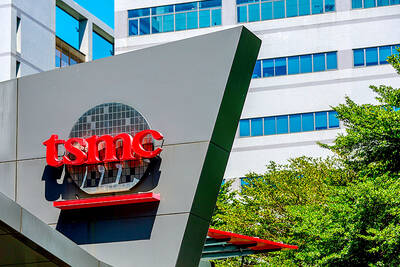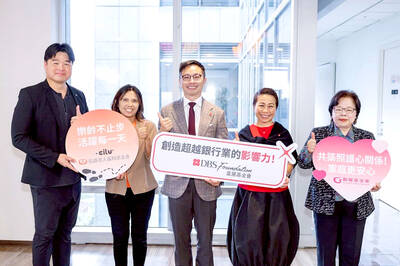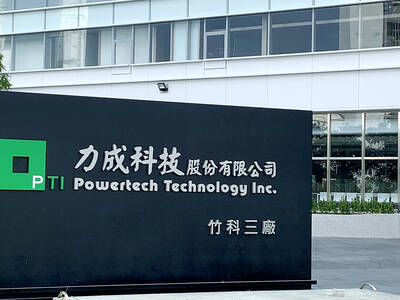The Ministry of Finance has estimated that a reduced tax rate for rice wine, expected to take effect as early as September, could cost the nation NT$1.47 billion (US$45.7 million) a year.
On Thursday, the Cabinet approved a draft amendment to the Tobacco and Liquor Tax Act (菸酒稅法) stipulating that red-label rice wine would be treated as cooking wine rather than distilled liquor.
If the bill passes its third legislative reading scheduled for Aug. 16, the tax rate for rice wine will be reduced to NT$5.4 per bottle, down from NT$29.25 per bottle, leading to a yearly tax loss of about NT$2.08 billion, the ministry said.
However, the new tax rate will cause prices to drop to NT$25 per 600ml bottle from NT$58 and boost sales to an estimated 210 million bottles per year, increasing tax revenue to NT$610 million per year.
“The government could see [an overall] tax loss of about NT$1.47 billion per year [after the new tax rate on rice wine takes effect],” said Lee Ching-hua (李慶華), deputy director-general of the ministry’s taxation agency.
After Taiwan joined the WTO in 2002, rice wine was subject to a distilled liquor tax of NT$185 per liter, causing the price of a standard bottle to rise from NT$22 to NT$180. Annual sales dropped, leading to rampant production of illegal, cheap rice wine, Lee said.
The legislature revised regulations last year to tax distilled liquor at NT$2.5 per liter for each percentage of alcohol by volume, boosting sales, but not stemming illegal production Lee said.

RUN IT BACK: A succesful first project working with hyperscalers to design chips encouraged MediaTek to start a second project, aiming to hit stride in 2028 MediaTek Inc (聯發科), the world’s biggest smartphone chip supplier, yesterday said it is engaging a second hyperscaler to help design artificial intelligence (AI) accelerators used in data centers following a similar project expected to generate revenue streams soon. The first AI accelerator project is to bring in US$1 billion revenue next year and several billion US dollars more in 2027, MediaTek chief executive officer Rick Tsai (蔡力行) told a virtual investor conference yesterday. The second AI accelerator project is expected to contribute to revenue beginning in 2028, Tsai said. MediaTek yesterday raised its revenue forecast for the global AI accelerator used

Taiwan Semiconductor Manufacturing Co (TSMC, 台積電) has secured three construction permits for its plan to build a state-of-the-art A14 wafer fab in Taichung, and is likely to start construction soon, the Central Taiwan Science Park Bureau said yesterday. Speaking with CNA, Wang Chun-chieh (王俊傑), deputy director general of the science park bureau, said the world’s largest contract chipmaker has received three construction permits — one to build a fab to roll out sophisticated chips, another to build a central utility plant to provide water and electricity for the facility and the other to build three office buildings. With the three permits, TSMC

The DBS Foundation yesterday announced the launch of two flagship programs, “Silver Motion” and “Happier Caregiver, Healthier Seniors,” in partnership with CCILU Ltd, Hondao Senior Citizens’ Welfare Foundation and the Garden of Hope Foundation to help Taiwan face the challenges of a rapidly aging population. The foundation said it would invest S$4.91 million (US$3.8 million) over three years to foster inclusion and resilience in an aging society. “Aging may bring challenges, but it also brings opportunities. With many Asian markets rapidly becoming super-aged, the DBS Foundation is working with a regional ecosystem of like-minded partners across the private, public and people sectors

BREAKTHROUGH TECH: Powertech expects its fan-out PLP system to become mainstream, saying it can offer three-times greater production throughput Chip packaging service provider Powertech Technology Inc (力成科技) plans to more than double its capital expenditures next year to more than NT$40 billion (US$1.31 billion) as demand for its new panel-level packaging (PLP) technology, primarily used in chips for artificial intelligence (AI) applications, has greatly exceeded what it can supply. A significant portion of the budget, about US$1 billion, would be earmarked for fan-out PLP technology, Powertech told investors yesterday. Its heavy investment in fan-out PLP technology over the past 10 years is expected to bear fruit in 2027 after the technology enters volume production, it said, adding that the tech would